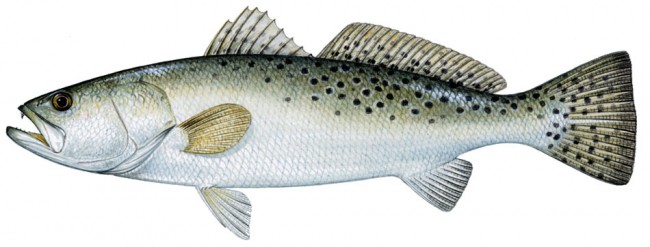
The Florida Fish and Wildlife Conservation Commission (FWC) advises anglers that the recreational harvest season for spotted seatrout in North Florida will close for one month to help maintain spotted seatrout abundance.
Click On:
- Why Fish & Wildlife Commission Is Keeping Strict Limits on Snook Fishing in Florida
- Fish and Wildlife Commission Website
- Hanging With Manatees
The harvest and possession of spotted seatrout is prohibited from Feb. 1 to March 1, 2011 in all waters north of the Flagler/Volusia counties line to the Florida-Georgia border in the Atlantic, and north of a line running due west from the westernmost point of Fred Howard Park Causeway (which is about 1.17 miles south of the Pinellas/Pasco counties line) to the Florida-Alabama border in the Gulf.
All other areas in Florida remain open to the recreational harvest of spotted seatrout under current FWC regulations, which are available online at MyFWC.com/Rules (click on “Fishing – Saltwater”).
The spotted seatrout, as summed up by the fish and wildlife commission:
Description: dark gray or green above, with sky blue tinges shading to silvery and white below; numerous distinct round black spots on back, extending to the dorsal fins and tail; black margin on posterior of tail; no barbels; no scales on the soft dorsal fin; one or two prominent canine teeth usually present at tip of upper jaw.
Where found: inshore or nearshore over grass, sand and sandy bottoms; move into slow-moving or still, deep waters in cold weather.
Size: common to 4 pounds on west coast, larger on east coast.
Florida Record: 15 lbs., 6 ozs. (The Florida records quoted are from the Florida Fish and Wildlife Conservation Commission’s printed publication, Fishing Lines and are not necessarily the most current ones. The records are provided as only as a benchmark.)
Remarks: matures during first or second year and spawns INSHORE from March through November; often in association with seagrass beds; lives mainly in estuaries and moves only short distances; adults feed mainly on shrimp and small fish; prefers water temperatures between 58 and 81 degrees F and may be killed if trapped in shallow water during cold weather; longevity 8 to 10 years.





























Leave a Reply